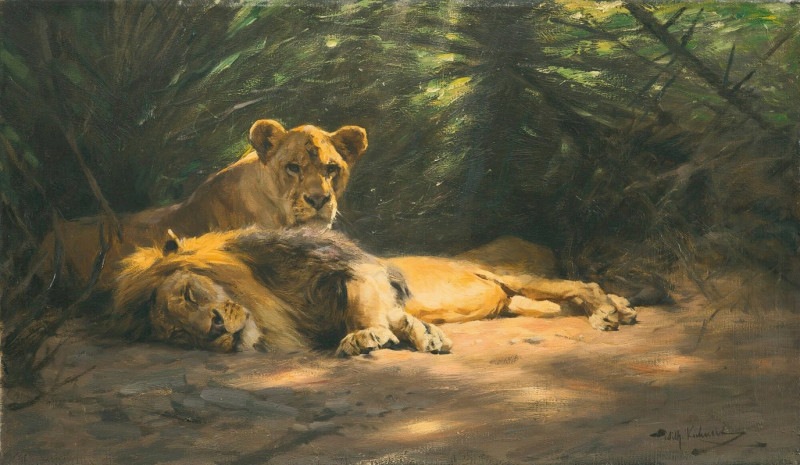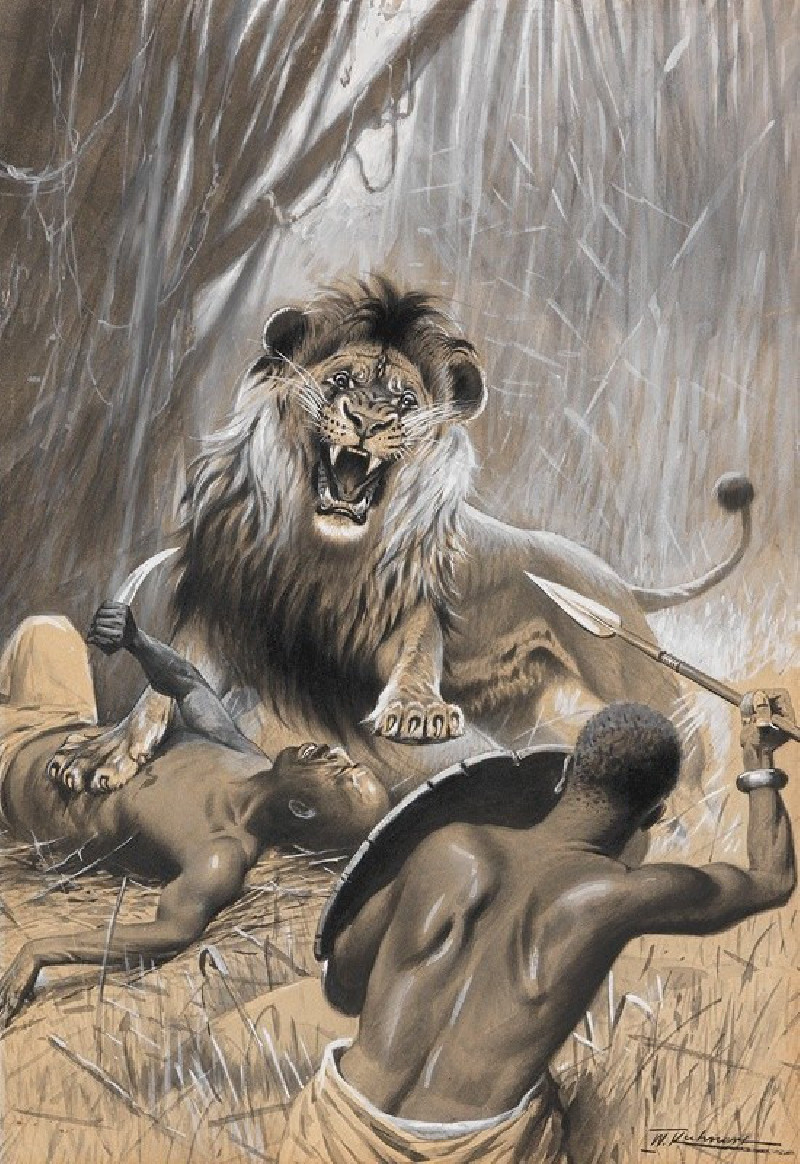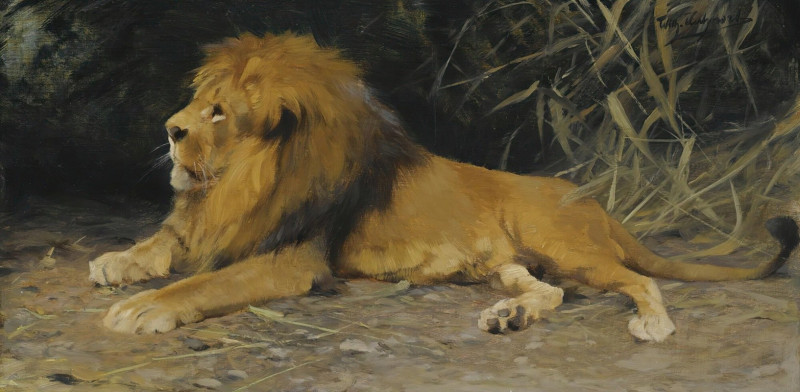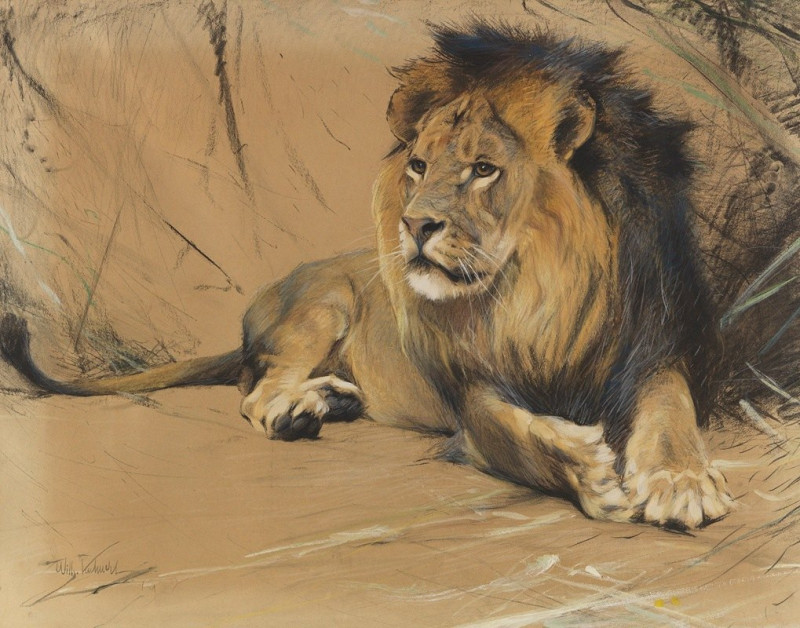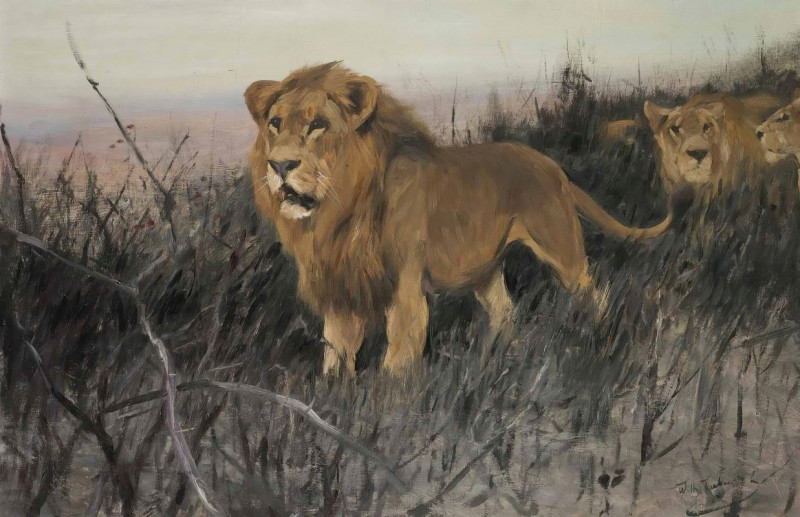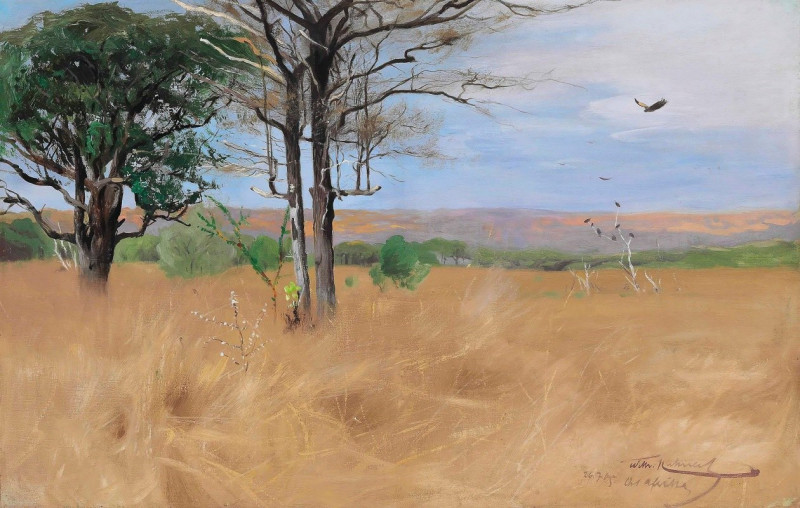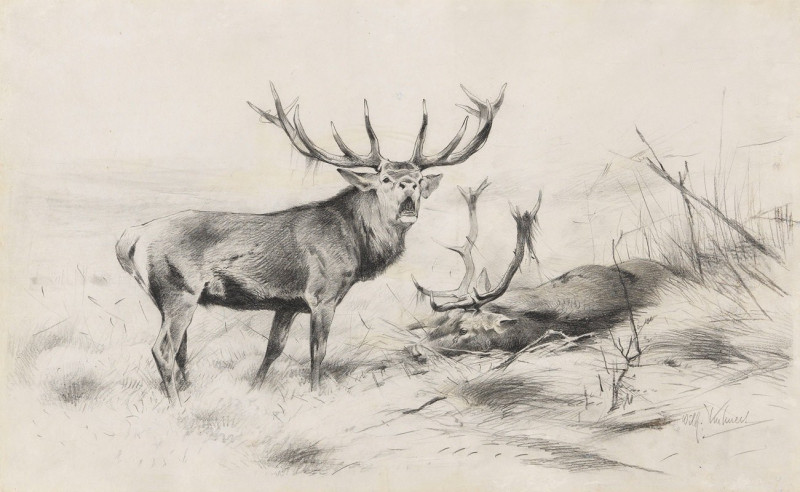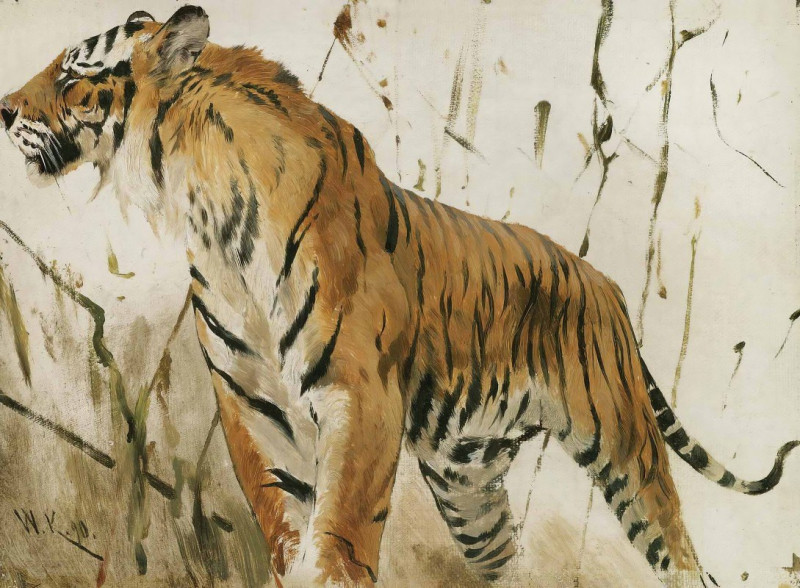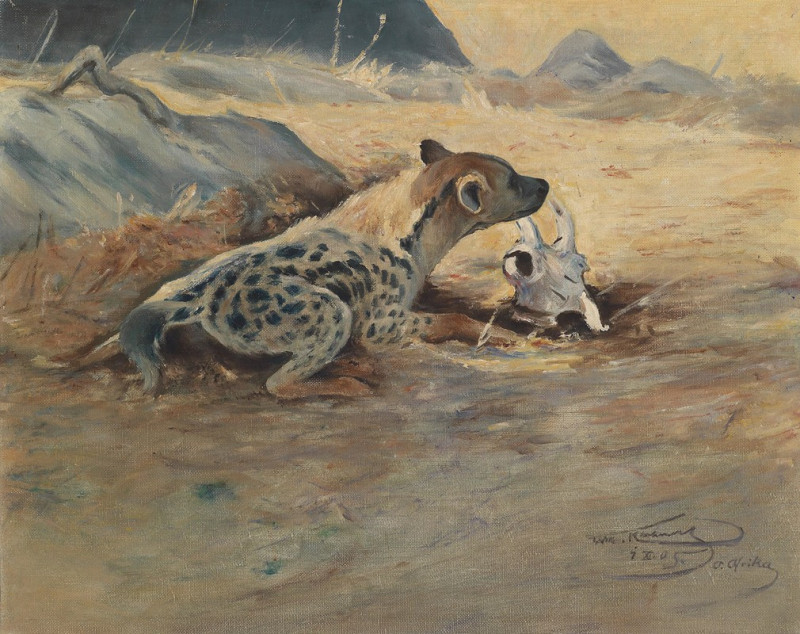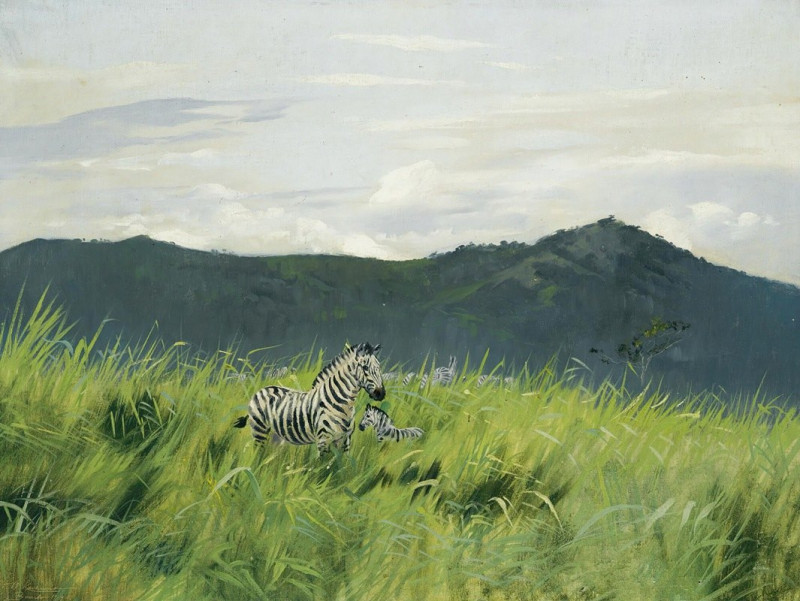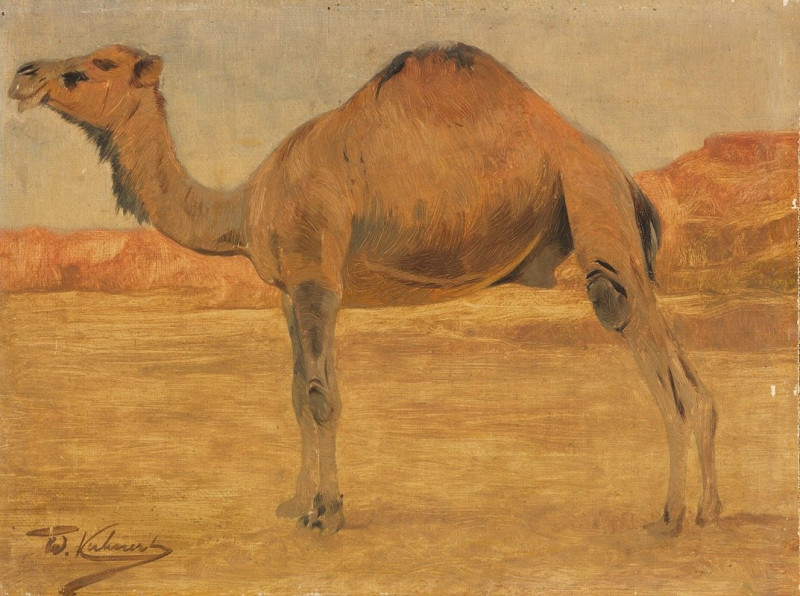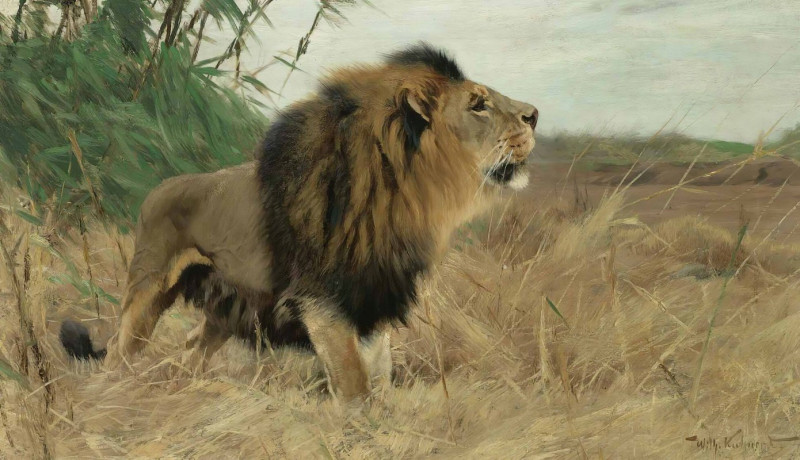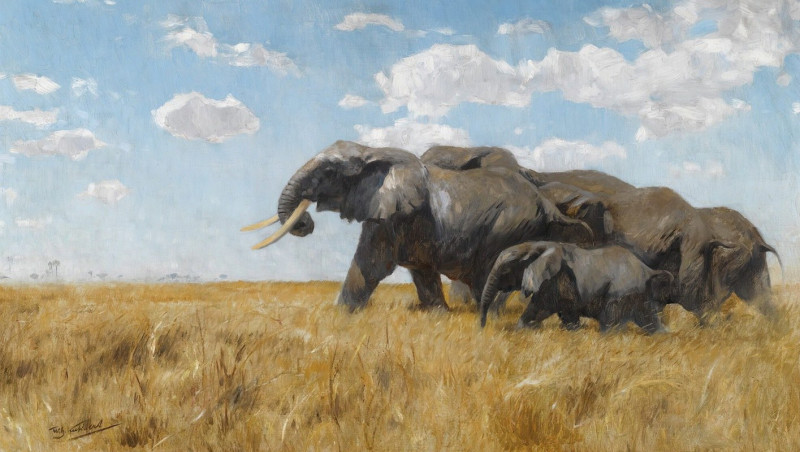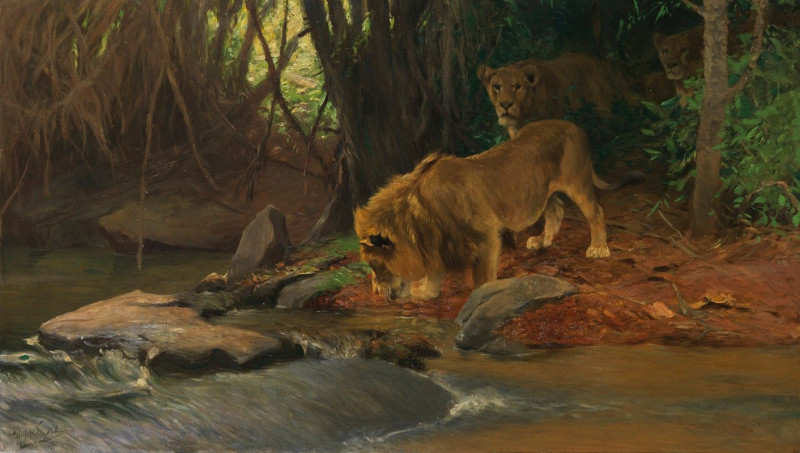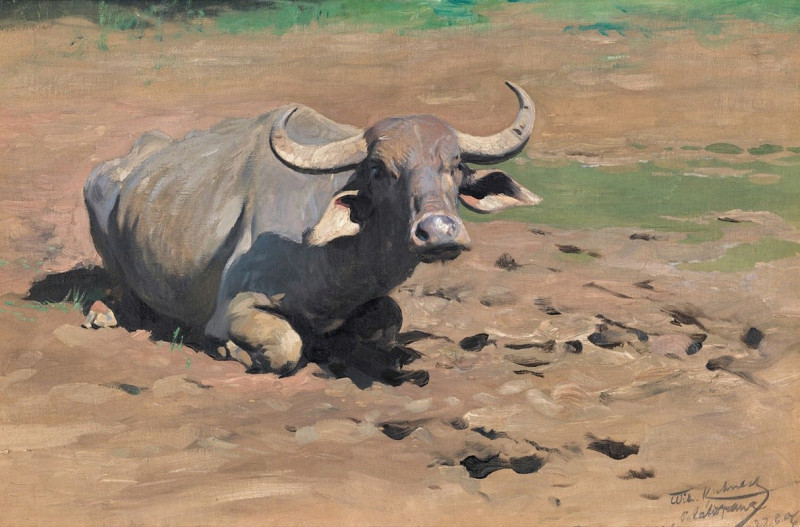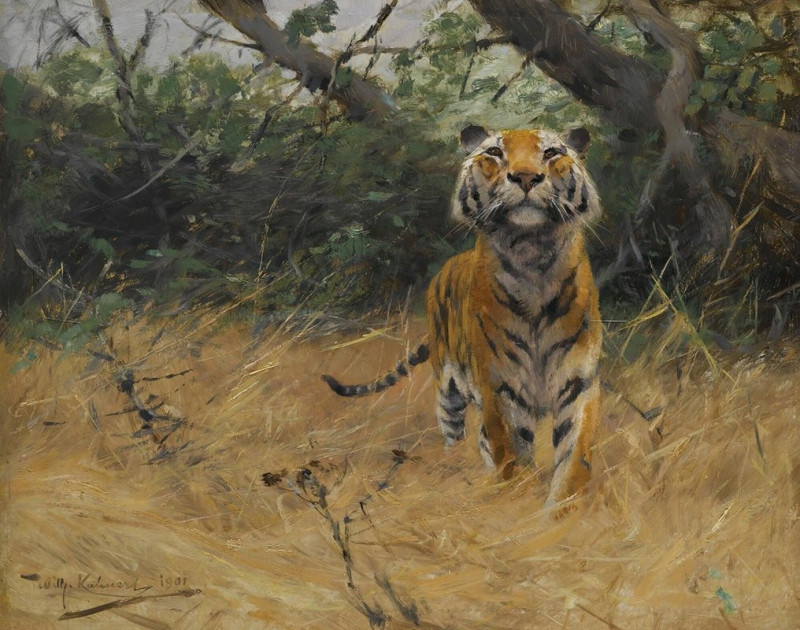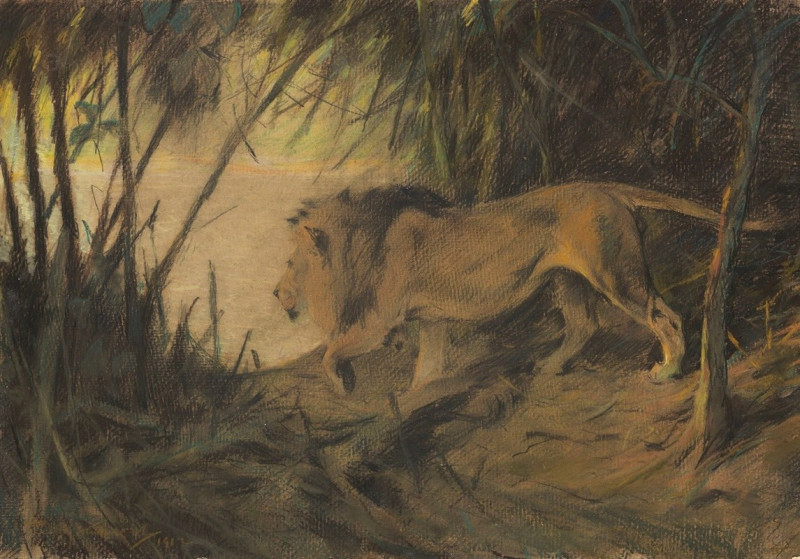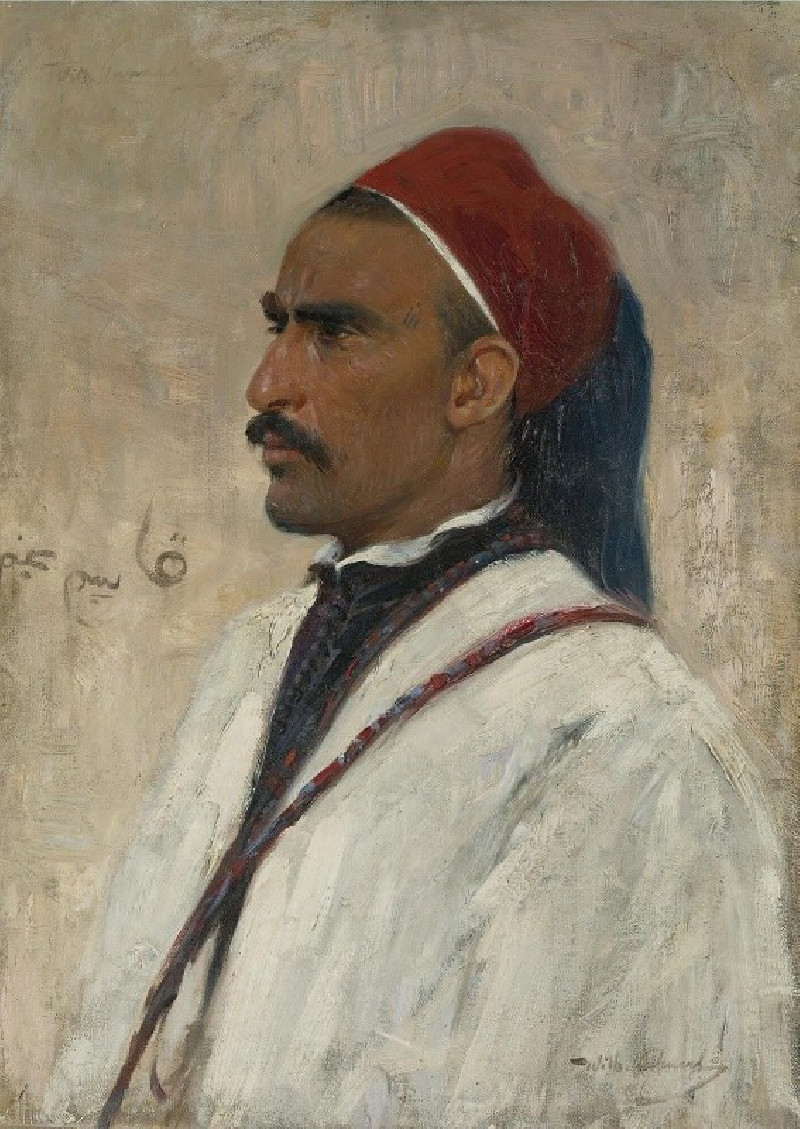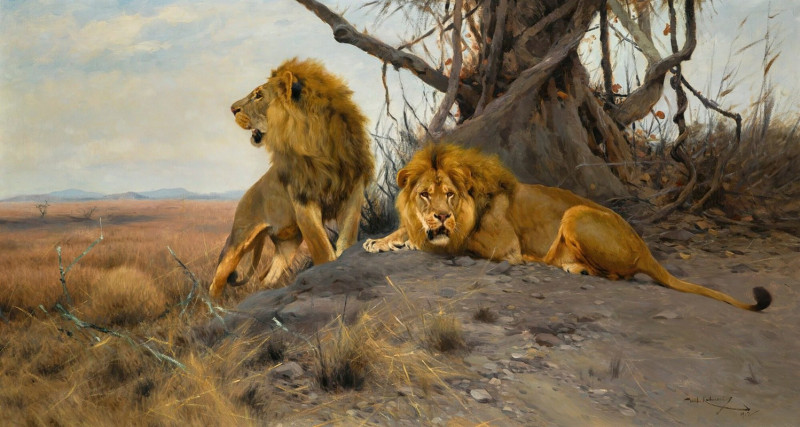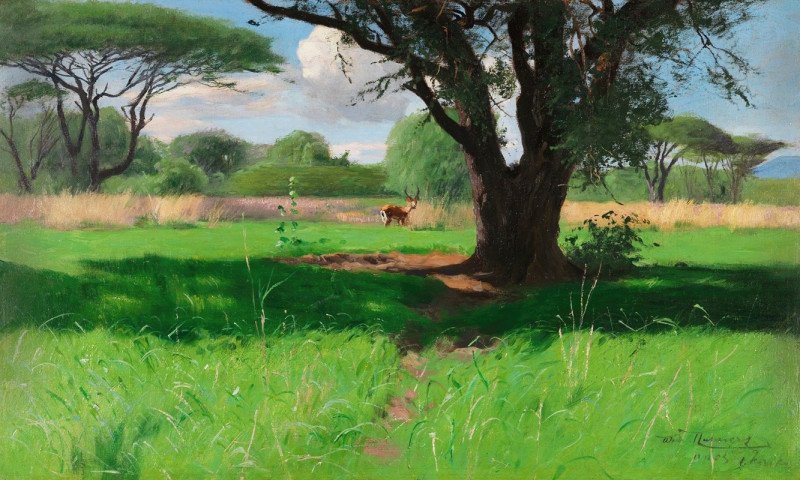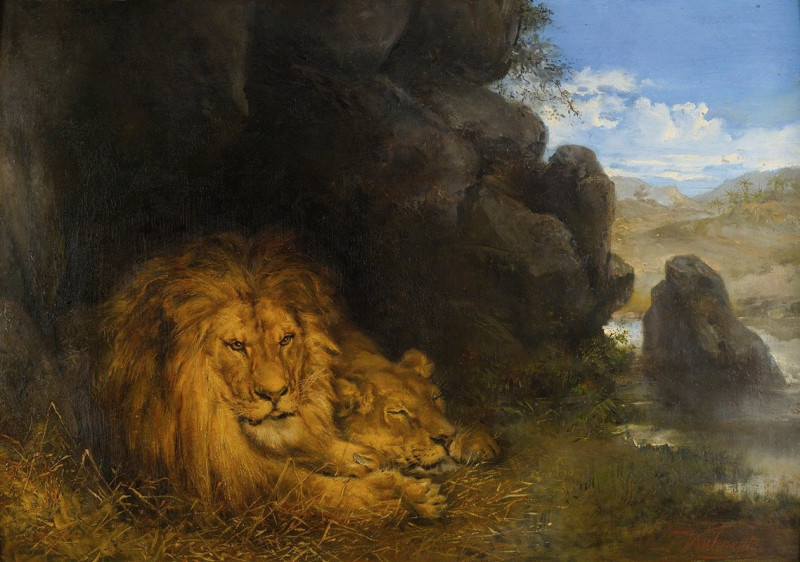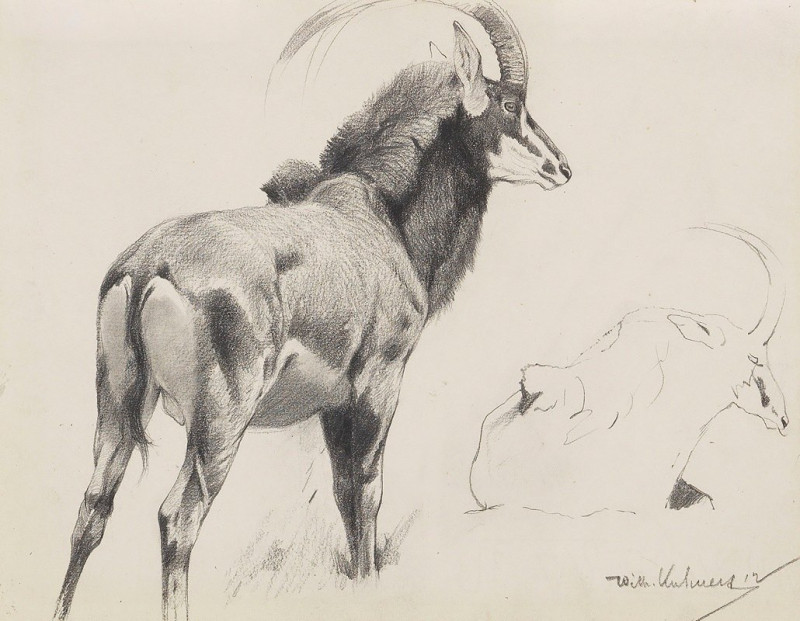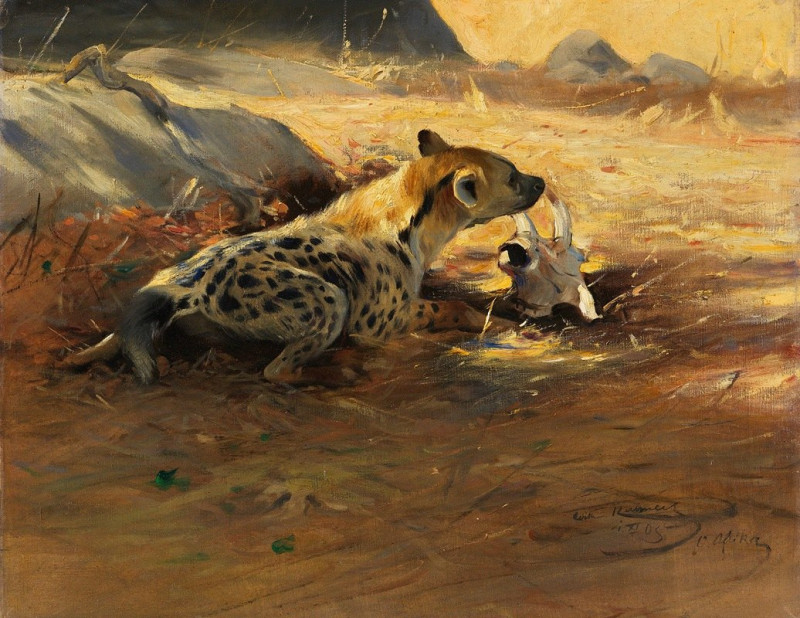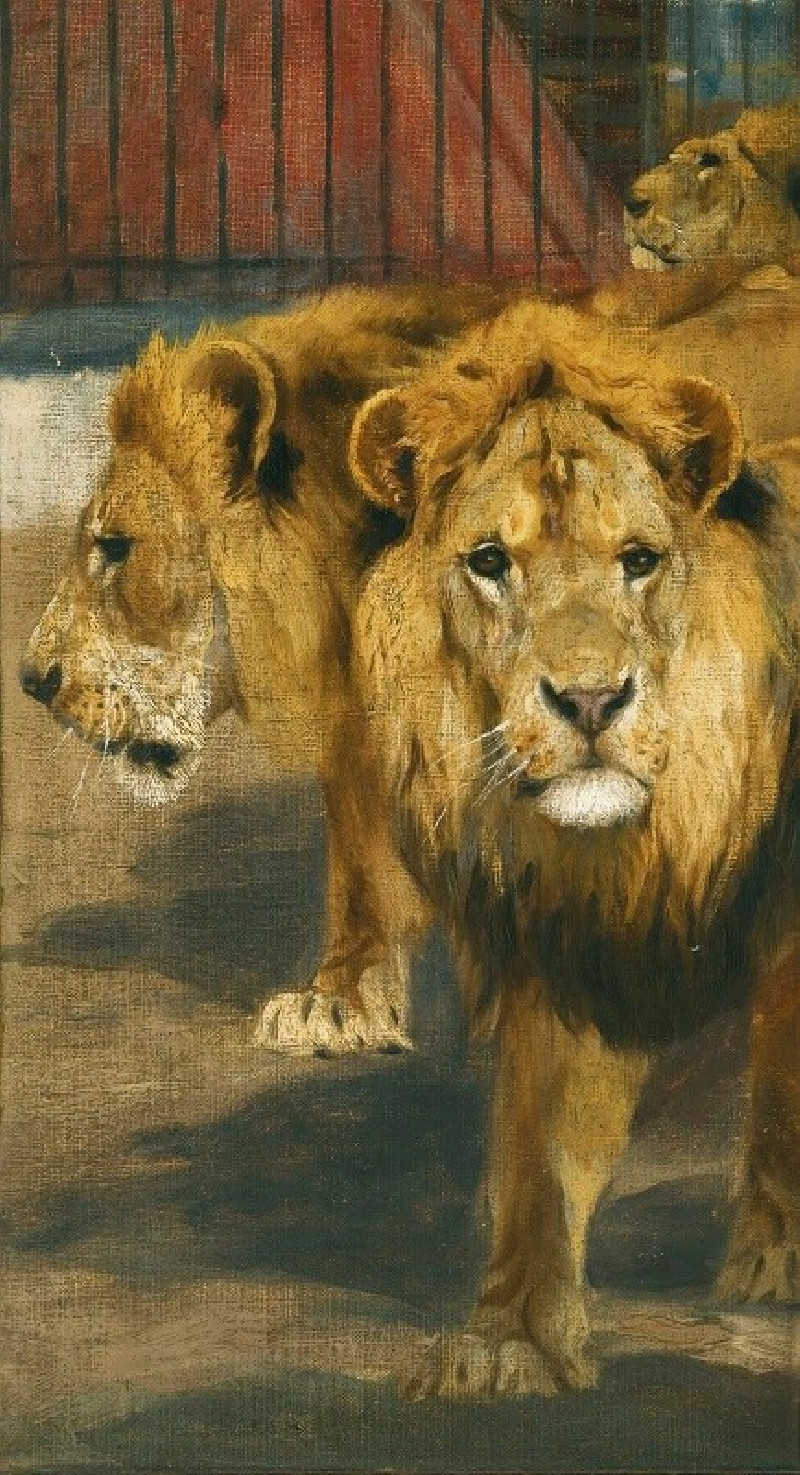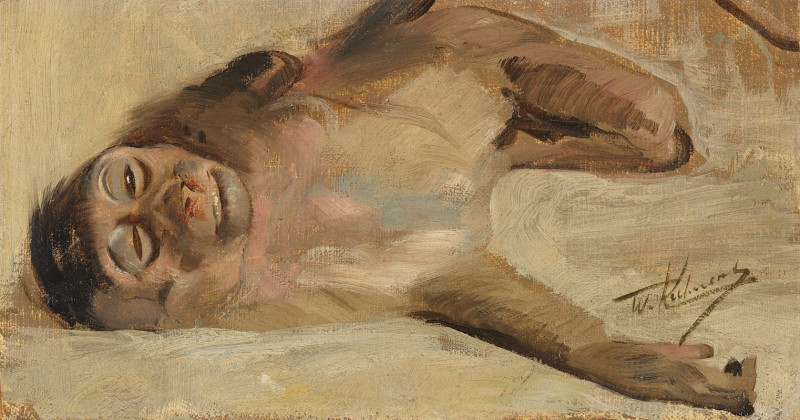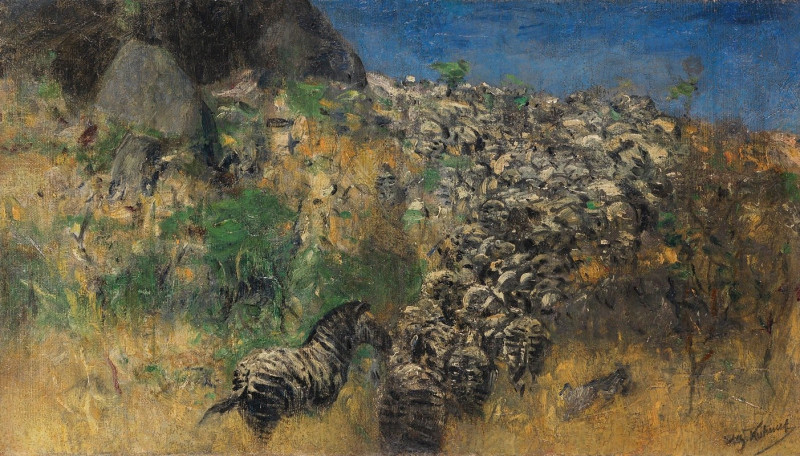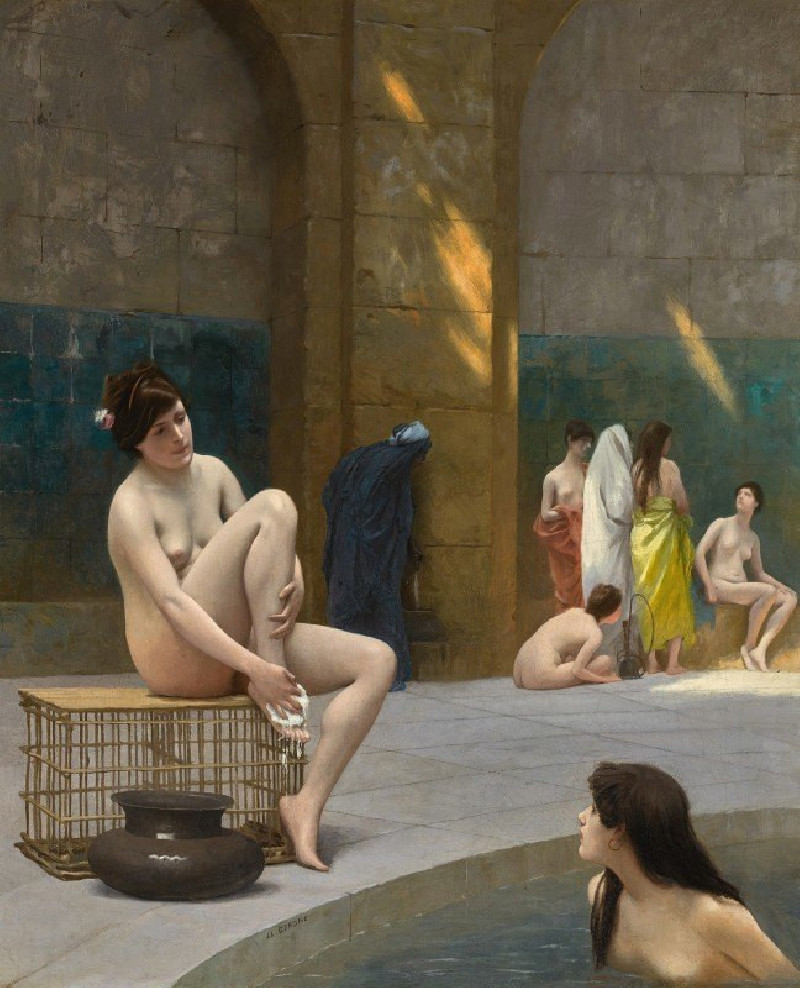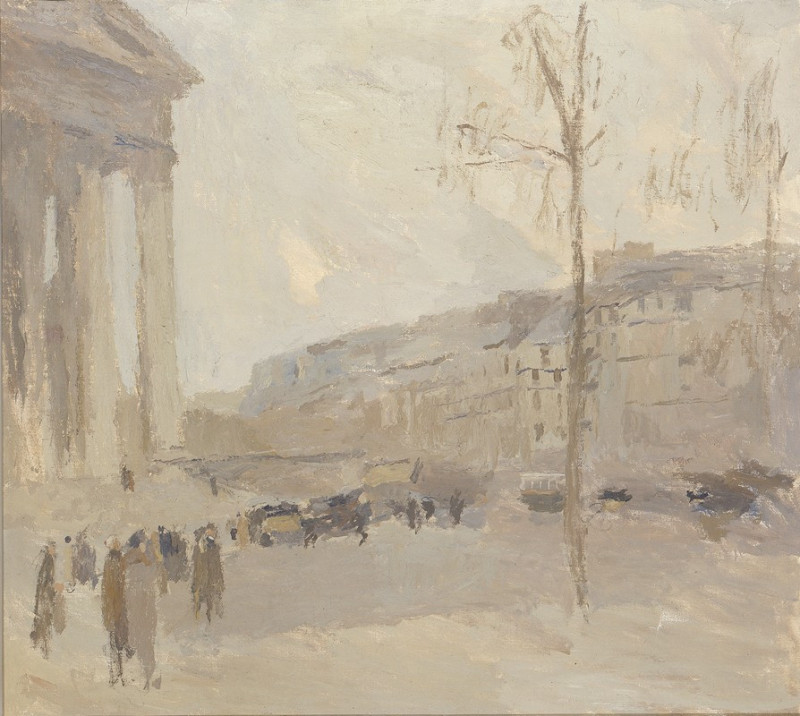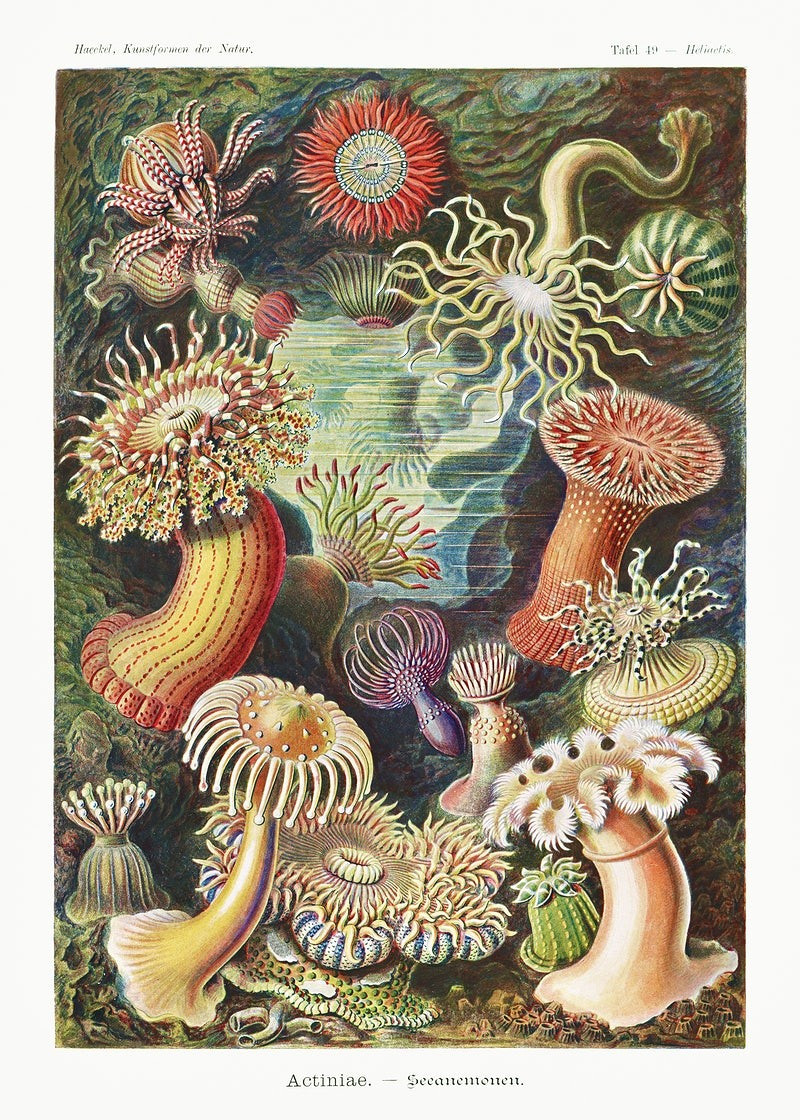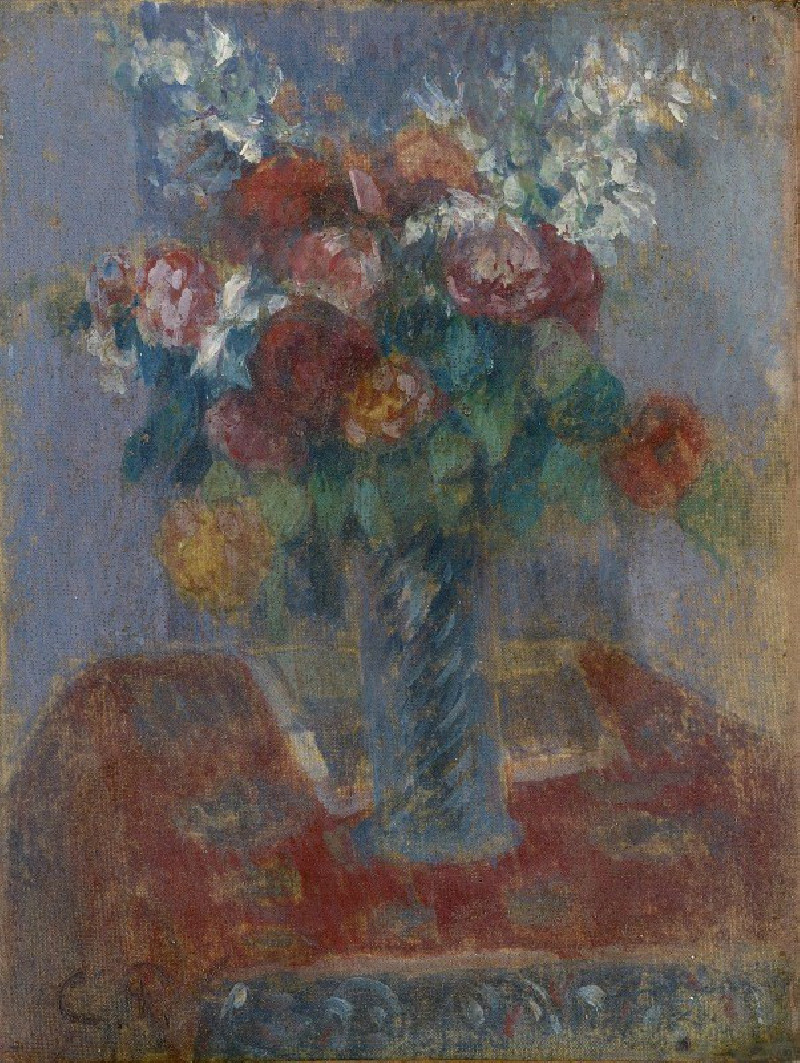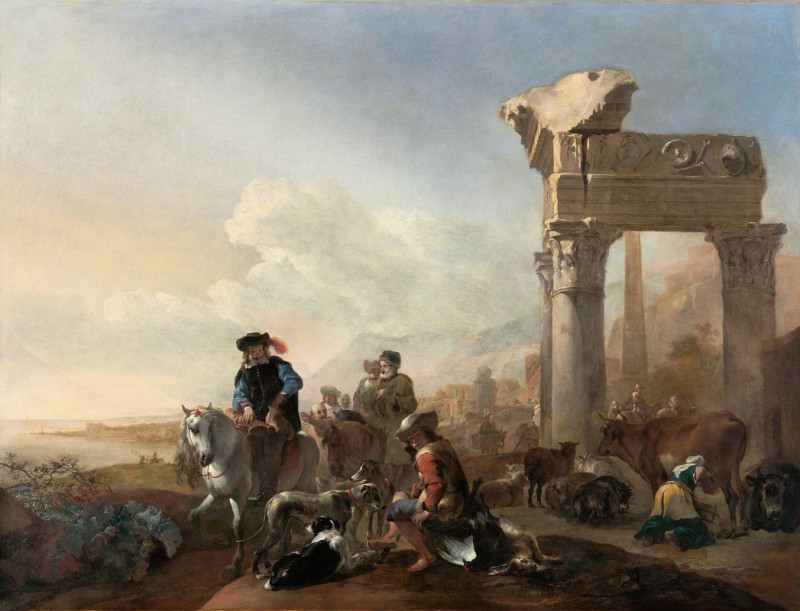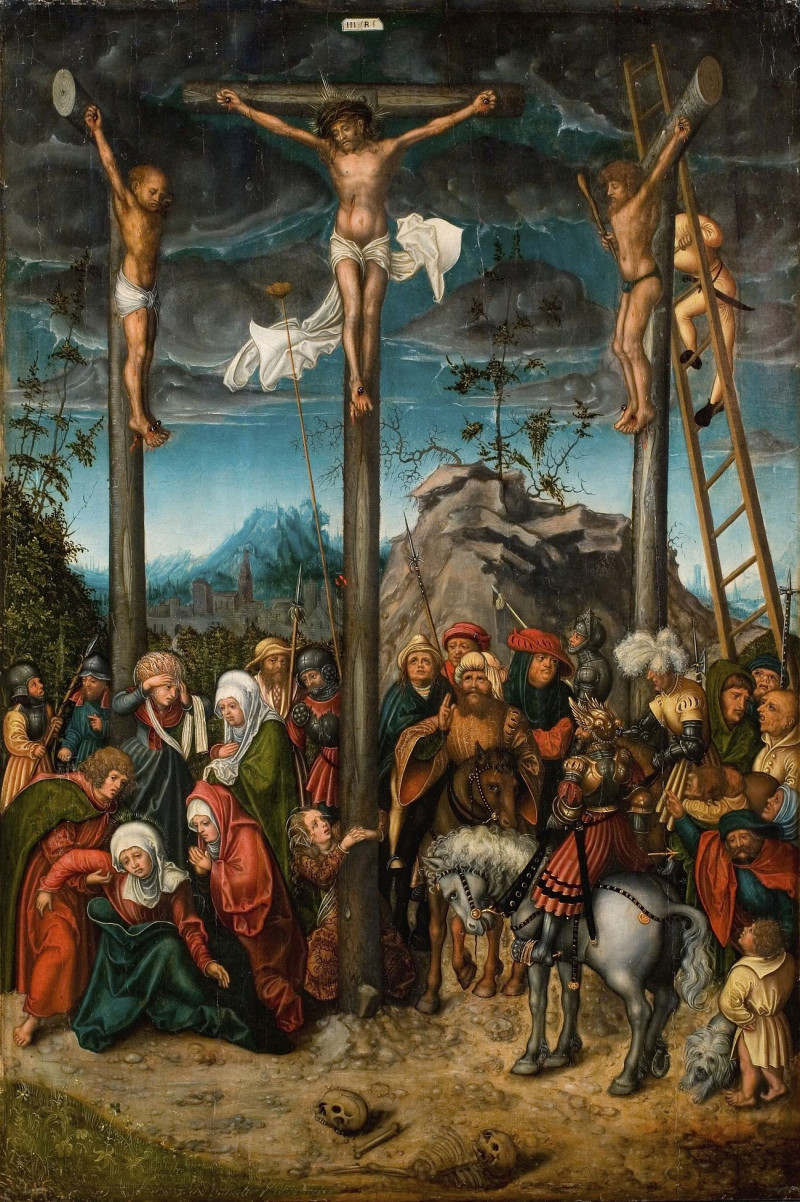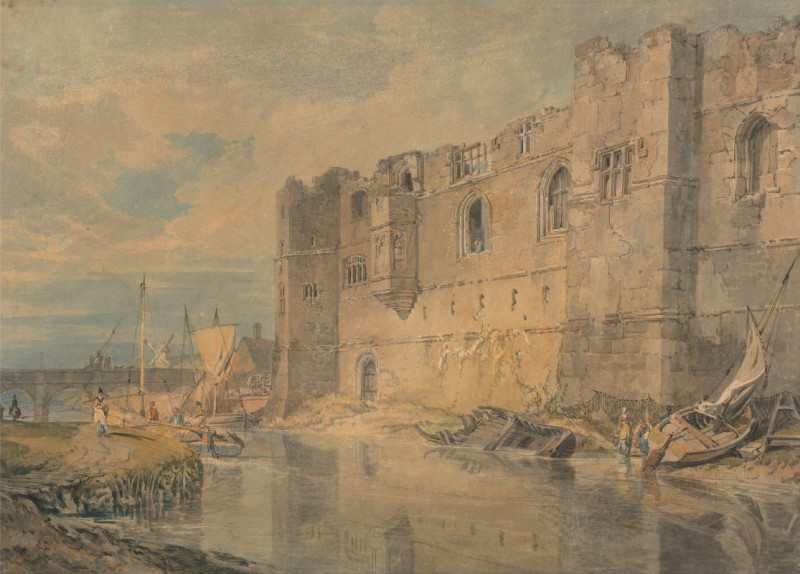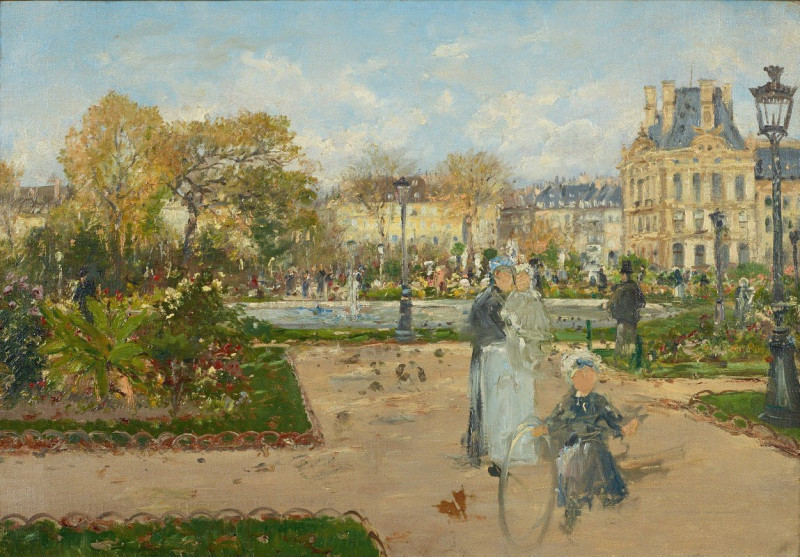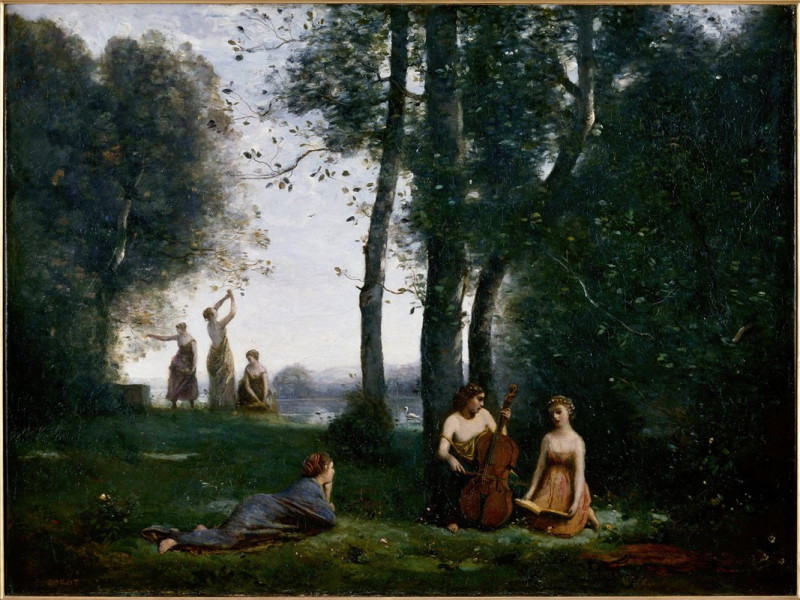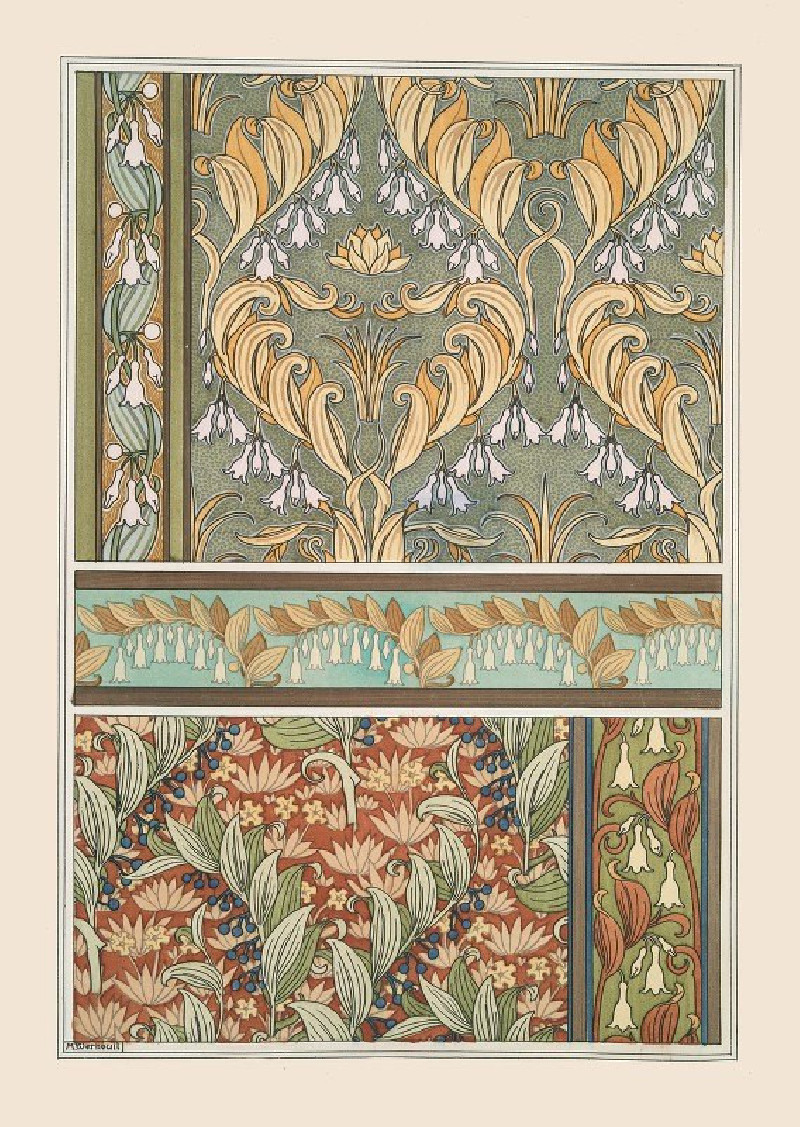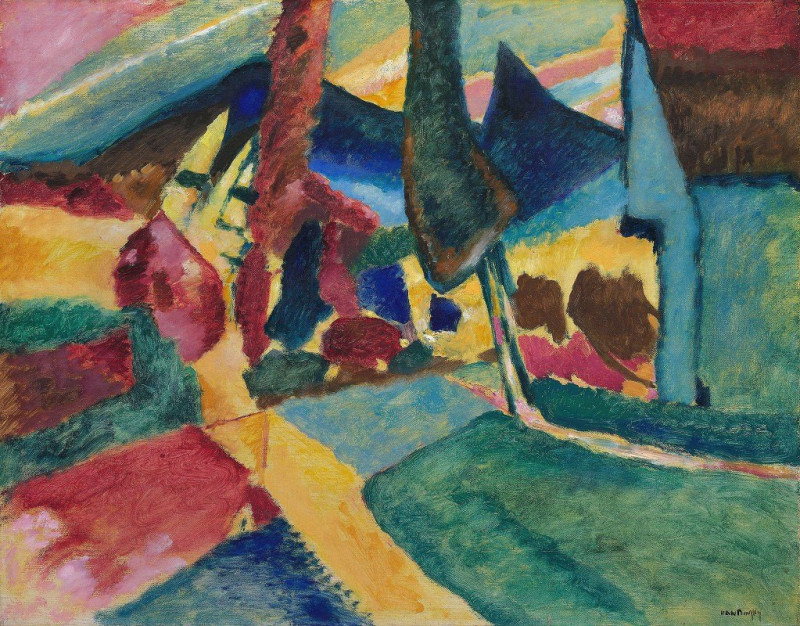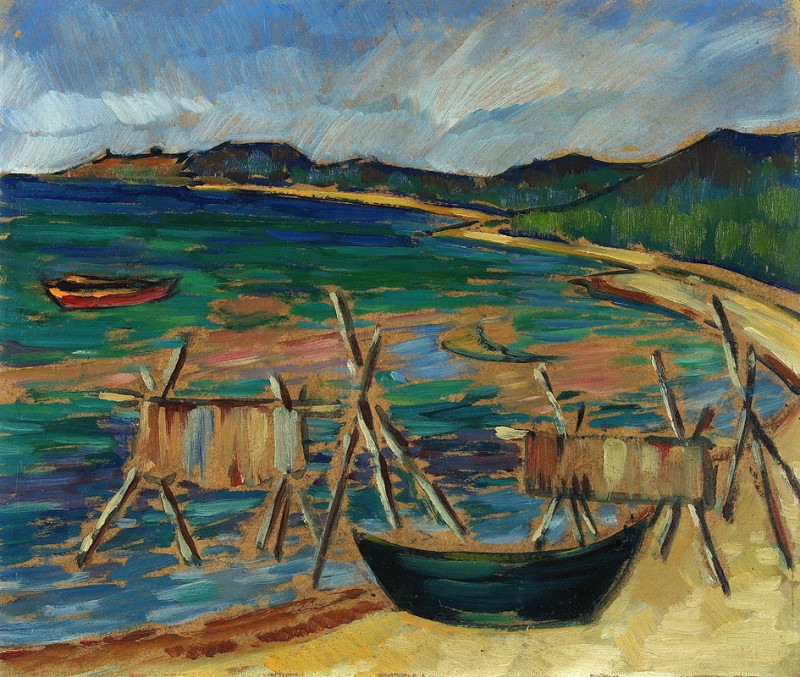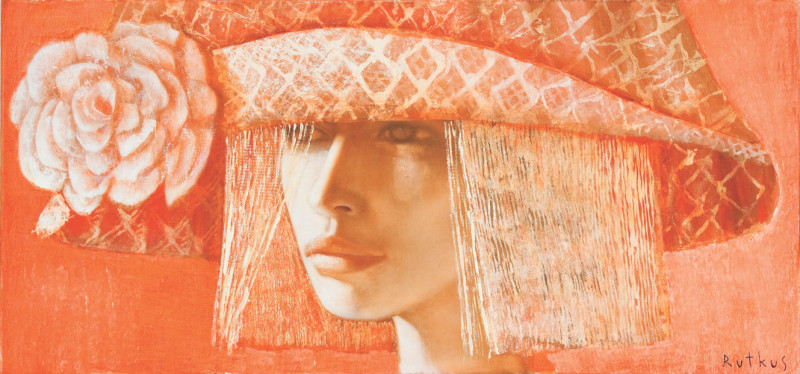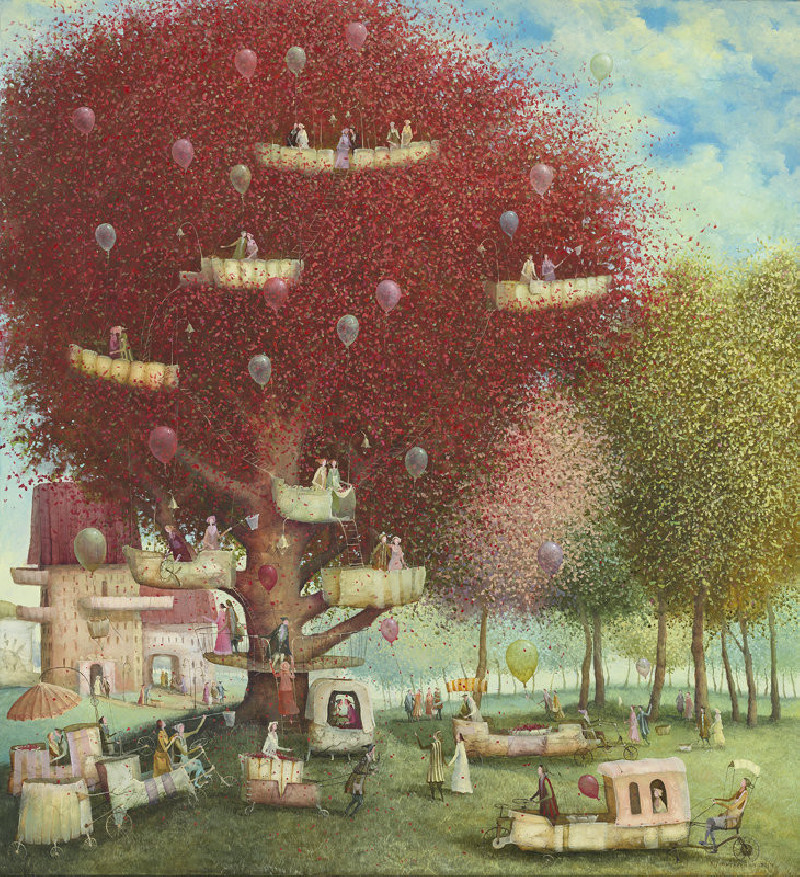The Lions’ Den
Technique: Giclée quality print
Recommended by our customers
More about this artwork
At the heart of our gallery stands a striking piece by the renowned German painter Wilhelm Kuhnert, titled "The Lions’ Den." Painted in Kuhnert’s characteristic realistic style, this artwork captures a tranquil moment in the daily life of two lions resting in the shaded refuge of their den.The painting delicately balances light and shadow, illustrating a mastery of environmental texture that Kuhnert is known for. The male lion, with his majestic mane, is depicted lying with eyes closed in a pose that exudes both power and peace. Beside him, the attentive lioness looks directly at the viewer, her expression one of alertness and regal calm.Kuhnert’s use of earthy tones and the detailed rendering of the lions’ fur and the surrounding foliage evoke the warmth and roughness of the African landscape, a testament to his skill and dedication to portraying wildlife in their natural habitats."The Lions’ Den" not only reflects the beauty and serenity of these magnificent creatures but also invites viewers to ponder the life in the wild, capturing an intimate moment that feels both timeless and fleeting.
Delivery
Returns
Friedrich Wilhelm Kuhnert was a German painter, author and illustrator who specialized in depictions of animals. After illustrating Alfred Brehm's books, he traveled to German East Africa to observe animals in their natural habitat and created a series of paintings that defined Africa for many Germans of the period.

